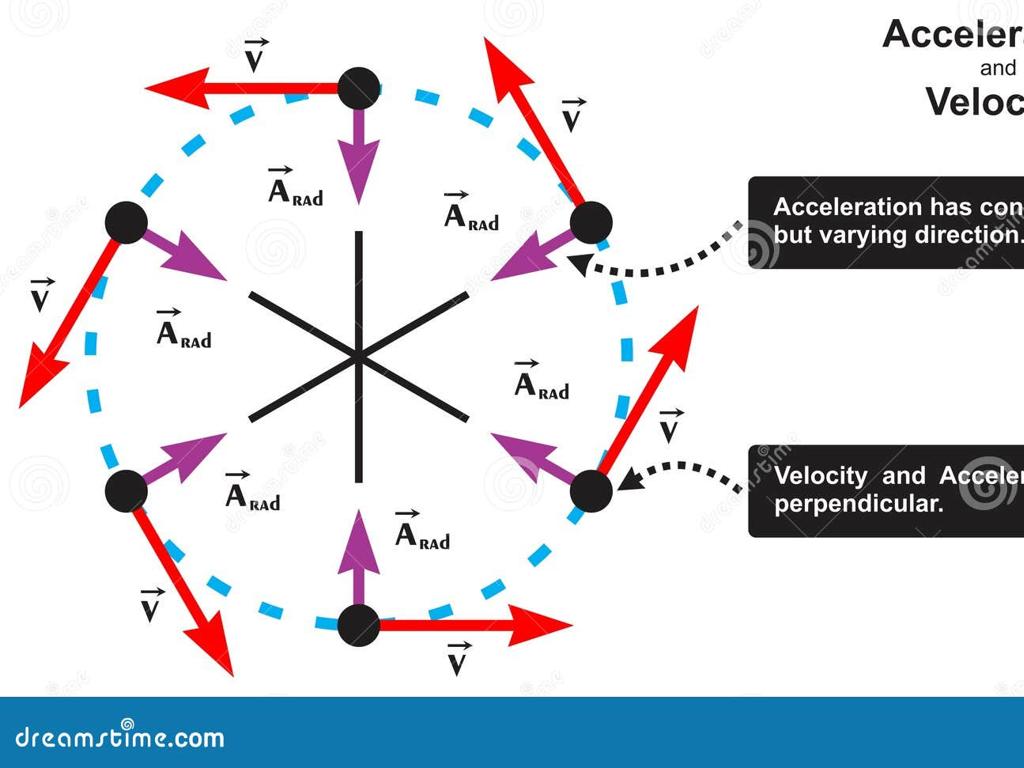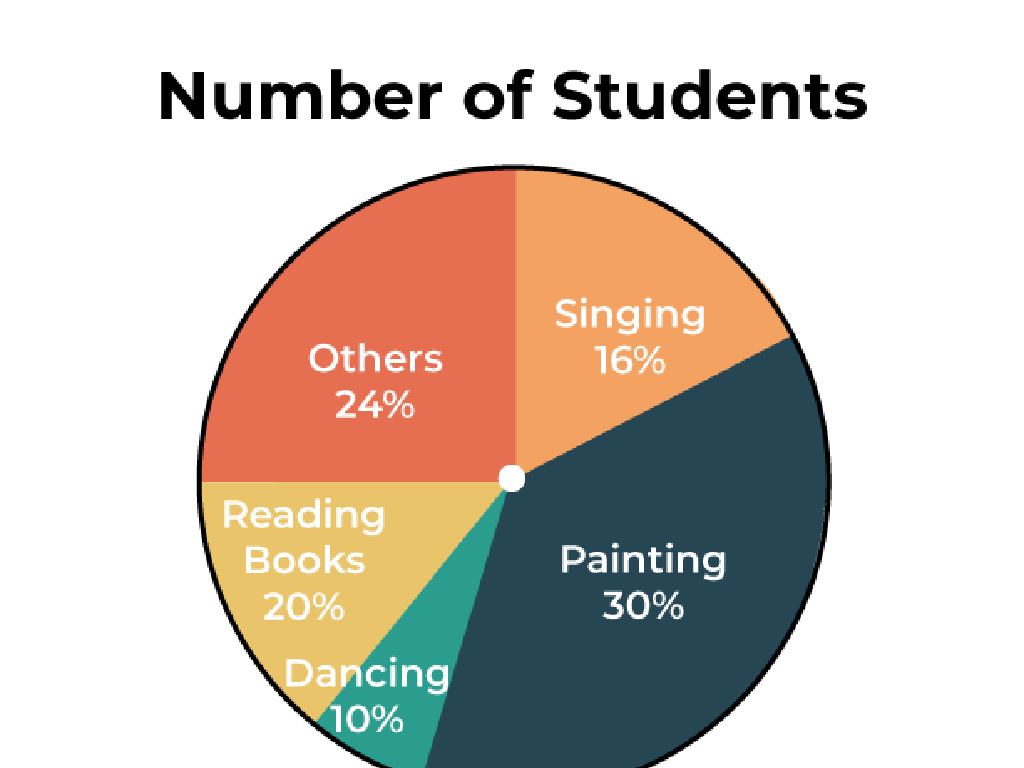Graph A Two-Variable Relationship
Subject: Math
Grade: Fifth grade
Topic: Variable Expressions
Please LOG IN to download the presentation. Access is available to registered users only.
View More Content
Graphing Two-Variable Relationships
– Understanding variables in math
– Variables represent numbers in equations, like ‘x’ or ‘y’.
– Defining expressions
– Expressions are math phrases combining numbers and variables.
– Graphing two-variable relationships
– A graph shows how one variable affects another.
– Exploring examples together
– We’ll plot points on a graph to see the relationship.
|
This slide introduces the concept of graphing two-variable relationships as part of understanding variable expressions. Begin by explaining variables as symbols that can represent numbers in mathematical equations. Then, define expressions as combinations of numbers, variables, and operations that represent a value. Emphasize the importance of graphing in visualizing how one variable affects another, and how relationships between variables can be observed on a graph. Use examples like temperature over time or distance traveled over time to illustrate this concept. Encourage students to think of other examples where two variables might be related and how they could graph those relationships.
Understanding Variables in Math
– Definition of a variable
– A symbol like x, y, or z that stands for a number
– Examples of variables
– Common variables: x, y, z
– Variables can change
– They can take on different values
– Variables in equations
– Used to show relationships between numbers
|
This slide introduces the concept of variables, which are fundamental in understanding algebra and functions. A variable is a symbol, often a letter, that represents a number in mathematical expressions and equations. Common examples of variables are x, y, and z. It’s important to convey to students that variables are not fixed; they can change and represent different values depending on the situation. Variables allow us to write equations and expressions that can be used to model real-world situations and solve problems. Encourage students to think of a variable as a placeholder for a number that we might not know yet or that can change.
Understanding Expressions in Math
– Expression: numbers, variables, operations
– Think of it like a math phrase that tells us something about numbers and variables
– Examples: 5 + x, 3y – 2, 4(a + b)
– For instance, 5 + x could mean 5 more than a number, and 3y – 2 could be triple a number minus two
– No equal sign in expressions
– Unlike equations, expressions aren’t complete thoughts. They don’t have an answer until we know the value of the variables
|
This slide introduces the concept of expressions to fifth-grade students. An expression in math is similar to a phrase in language; it is a combination of numbers, variables (like x or y), and operations (like addition or subtraction) that represents a value. Provide examples of expressions and highlight that they do not include an equal sign, which differentiates them from equations. Emphasize that expressions are not complete sentences in math they don’t tell us the value of something, they just describe a relationship. Encourage students to come up with their own expressions using numbers and variables to demonstrate their understanding.
Graphing Two-Variable Relationships
– Two variables interact with each other
– One variable changes in response to the other
– Example: Height vs. Age in kids
– As children get older, they usually get taller
– Represent with equations like y = 2x + 3
– y is the height, x is the age, and the numbers show their relationship
– Graphs show this relationship visually
|
This slide introduces the concept of two-variable relationships to fifth-grade students, focusing on how one variable can affect another. Use the relatable example of how a child’s height increases with age to illustrate this relationship. Explain that equations like y = 2x + 3 help us represent these relationships mathematically, where ‘y’ could be height, ‘x’ could be age, and the numbers show how much one variable affects the other. Emphasize that graphs are a powerful tool for visualizing these relationships, making it easier to understand and predict changes. Encourage students to think of other examples where two variables might be related and how we might graph those relationships.
Graphing a Two-Variable Relationship
– Understand the graph axes
– x-axis (horizontal), y-axis (vertical)
– Points represent value pairs
– Each point is a pair (x, y)
– Plotting points on the graph
– Use values to find graph position
– Practice with example pairs
– Try plotting (2,3), (4,5), (6,7)
|
This slide introduces students to the basics of creating a graph with two variables. Start by explaining the x-axis and y-axis, ensuring students understand their orientation. Then, discuss how each point on the graph represents a pair of values, with the first number corresponding to the x-axis and the second to the y-axis. Demonstrate plotting points by choosing values for x and y and marking them on the graph. Finally, provide practice pairs for students to plot themselves, reinforcing the concept. Encourage students to ask questions if they’re unsure about how to plot the points.
Plotting Points on a Graph
– Locate the x-value on the x-axis
– Find the y-value on the y-axis
– Draw a dot at the intersection
The point where the x and y values meet is where you draw the dot
– Example: Plot (3, 6)
Start at 3 on the x-axis, go up to 6 on the y-axis, place your dot
|
This slide introduces students to the basics of plotting points on a graph, which is a fundamental skill in understanding two-variable relationships. Start by explaining the axes: the x-axis runs horizontally, and the y-axis runs vertically. Demonstrate how to find the x-value on the x-axis and then the y-value on the y-axis. Emphasize that the point where these two values intersect is where the dot should be placed. Use the example (3, 6) to show this process visually. Have students practice with additional points to reinforce the concept. Encourage them to check their work by ensuring that the dot correctly aligns with both the x and y values.
Graphing a Line in Two Variables
– A graph line represents an equation
– Each point on the line is a solution to the equation
– Two points are needed to graph a line
– Plot the points on the graph
– Use a ruler to ensure the line is straight
– Draw a line through the points
– The line extends in both directions infinitely
|
When teaching fifth graders to graph a line, start by explaining that a line on a graph represents all the points that satisfy a given equation. Emphasize the importance of finding at least two points to determine the line’s direction and position. Demonstrate how to plot these points on the coordinate plane. Once the points are plotted, show students how to draw a straight line through them, extending the line beyond the points to show that it continues infinitely in both directions. Use simple and clear examples to illustrate these concepts, and provide practice problems for students to apply what they’ve learned.
Class Activity: Let’s Graph Together!
– Graph the equation y = 2x + 1
– Find x and y pairs for the equation
– If x is 0, y is 1; if x is 1, y is 3
– Plot the pairs on the graph
– Place a dot for each pair on the grid
– Draw the line connecting the points
– Connect the dots in a straight line
|
This activity is designed to help students understand the concept of graphing a two-variable relationship. Start by explaining the equation y = 2x + 1. Then, guide students to calculate y for various values of x, such as 0, 1, 2, and so on. Once they have several pairs, they should plot these points on a graph paper. After plotting, students will draw a line through the points, which will visually represent the equation. Provide students with graph paper and encourage them to work in pairs or small groups to foster collaboration. As an extension, you can have different groups work with different equations and compare their graphs at the end of the activity.
Graphing Practice: Homework Assignment
– Congratulations on learning graphing!
– Homework: Graph y = 3x – 2
– Use a graph paper and plot points where x is 0, 1, 2, and so on
– Show your work next class
– Share your learning experience
– Think about how changing ‘x’ affects ‘y’
|
This slide serves as a conclusion to the lesson on graphing two-variable relationships and sets up the homework assignment. The students are tasked with graphing the linear equation y = 3x – 2, which will help reinforce their understanding of how a change in one variable affects the other. Encourage students to use graph paper and to carefully plot at least five points to see the line clearly. Remind them to label their axes and to use a ruler for accuracy. In the next class, be prepared to facilitate a discussion where students can share their graphs and describe what they learned about the relationship between ‘x’ and ‘y’. This will help solidify their understanding and allow them to learn from each other’s insights.





